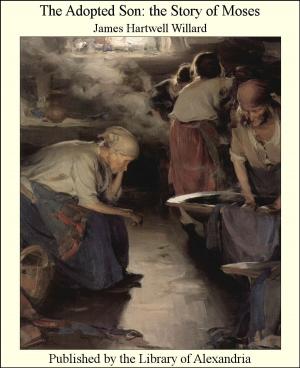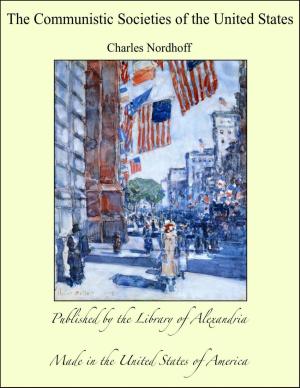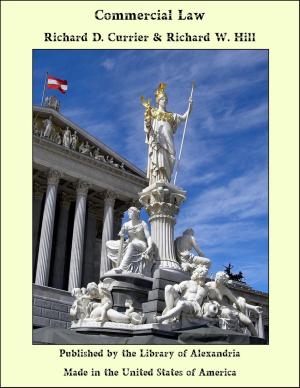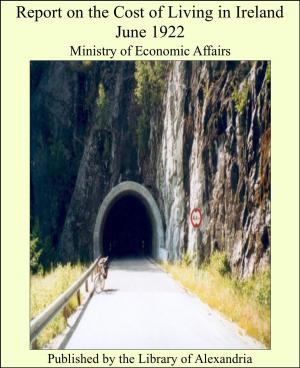The Yoke: A Romance of the Days when the Lord Redeemed the Children of Israel from the Bondage of Egypt
Nonfiction, Religion & Spirituality, New Age, History, Fiction & Literature| Author: | Elizabeth Miller | ISBN: | 9781465623522 |
| Publisher: | Library of Alexandria | Publication: | March 8, 2015 |
| Imprint: | Language: | English |
| Author: | Elizabeth Miller |
| ISBN: | 9781465623522 |
| Publisher: | Library of Alexandria |
| Publication: | March 8, 2015 |
| Imprint: | |
| Language: | English |
Near the eastern boundary of that level region of northern Egypt, known as the Delta, once thridded by seven branches of the sea-hunting Nile, Rameses II, in the fourteenth century B. C., erected the city of Pithom and stored his treasure therein. His riches overtaxed its coffers and he builded Pa-Ramesu, in part, to hold the overflow. But he died before the work was completed by half, and his fourteenth son and successor, Meneptah, took it up and pushed it with the nomad bond-people that dwelt in the Delta. The city was laid out near the center of Goshen, a long strip of fertile country given over to the Israelites since the days of the Hyksos king, Apepa, near the year 1800 B. C. Morning in the land of the Hebrew dawned over level fields, green with unripe wheat and meadow grass. Wherever the soil was better for grazing great flocks of sheep moved in compact clouds, with a lank dog and an ancient shepherd following them. The low, shapeless tents and thatched hovels of the Israelites stood in the center of gardens of lentils, garlic and lettuce, securely hedged against the inroads of hares and roving cattle. Close to these were compounds for the flocks and brush inclosures for geese, and cotes for the pigeons used in sacrifice. Here dwelt the aged in trusteeship over the land, while the young and sturdy builded Pa-Ramesu. Sunrise on the uncompleted city tipped the raw lines of her half-built walls with broken fire and gilded the gear of gigantic hoisting cranes. Scaffolding, clinging to bald façades, seemed frail and cobwebby at great height, and slabs of stone, drawn and held by cables near the summit of chutes, looked like dice on the giddy slide. Below in the still shadowy passages and interiors, speckled with fallen mortar, lay chains, rubble of brick and chipped stone; splinters, flinders and odd ends of timber; scraps of metal, broken implements and the what-not that litters the path of construction. Without, in the avenues, vaguely outlined by the slowly rising structures on either side, were low-riding, long, heavy, dwarf-wheeled vehicles and sledges to which men, not beasts, had been harnessed. Here, also, were great cords of new brick and avalanches of glazed tile where disaster had overtaken orderly stacks of this multi-tinted material. In the open spaces were covered heaps of sand, and tons of lime, in sacks; layers of paint and hogsheads of tar; ingots of copper and pigs of bronze. Roadways, beaten in the dust by a multitude of bare feet, led in a hundred directions, all merging in one great track toward the camp of the laboring Israelites. This was pitched in a vast open in the city's center, wherein Rameses II had planned to build a second Karnak to Imhotep. Under the gracious favor of this, the physician god, the great Pharaoh had regained his sight. But death stayed his grateful hand and Meneptah forgot his father's debt. Here, then, year in and year out, an angular sea of low tents sheltered Israel. Let it not be supposed that all the sons of Abraham were here. Thousands labored yet in the perfection of Pithom, on the highways of the Lower country, and on the Rameside canal, and the greater number made the brick for all Egypt in the clay-fields of the Delta. Therefore, within the walls of Pa-Ramesu there were somewhat more than three thousand Hebrews, men, women and children. On a slight eminence, overlooking the camp, were numerous small structures of sun-dried brick, grouped about one of larger dimensions. Above this was raised a military standard, a hawk upon a cross-bar, from which hung party-colored tassels of linen floss. By this sign, the order of government was denoted. The Hebrews were under martial law.
Near the eastern boundary of that level region of northern Egypt, known as the Delta, once thridded by seven branches of the sea-hunting Nile, Rameses II, in the fourteenth century B. C., erected the city of Pithom and stored his treasure therein. His riches overtaxed its coffers and he builded Pa-Ramesu, in part, to hold the overflow. But he died before the work was completed by half, and his fourteenth son and successor, Meneptah, took it up and pushed it with the nomad bond-people that dwelt in the Delta. The city was laid out near the center of Goshen, a long strip of fertile country given over to the Israelites since the days of the Hyksos king, Apepa, near the year 1800 B. C. Morning in the land of the Hebrew dawned over level fields, green with unripe wheat and meadow grass. Wherever the soil was better for grazing great flocks of sheep moved in compact clouds, with a lank dog and an ancient shepherd following them. The low, shapeless tents and thatched hovels of the Israelites stood in the center of gardens of lentils, garlic and lettuce, securely hedged against the inroads of hares and roving cattle. Close to these were compounds for the flocks and brush inclosures for geese, and cotes for the pigeons used in sacrifice. Here dwelt the aged in trusteeship over the land, while the young and sturdy builded Pa-Ramesu. Sunrise on the uncompleted city tipped the raw lines of her half-built walls with broken fire and gilded the gear of gigantic hoisting cranes. Scaffolding, clinging to bald façades, seemed frail and cobwebby at great height, and slabs of stone, drawn and held by cables near the summit of chutes, looked like dice on the giddy slide. Below in the still shadowy passages and interiors, speckled with fallen mortar, lay chains, rubble of brick and chipped stone; splinters, flinders and odd ends of timber; scraps of metal, broken implements and the what-not that litters the path of construction. Without, in the avenues, vaguely outlined by the slowly rising structures on either side, were low-riding, long, heavy, dwarf-wheeled vehicles and sledges to which men, not beasts, had been harnessed. Here, also, were great cords of new brick and avalanches of glazed tile where disaster had overtaken orderly stacks of this multi-tinted material. In the open spaces were covered heaps of sand, and tons of lime, in sacks; layers of paint and hogsheads of tar; ingots of copper and pigs of bronze. Roadways, beaten in the dust by a multitude of bare feet, led in a hundred directions, all merging in one great track toward the camp of the laboring Israelites. This was pitched in a vast open in the city's center, wherein Rameses II had planned to build a second Karnak to Imhotep. Under the gracious favor of this, the physician god, the great Pharaoh had regained his sight. But death stayed his grateful hand and Meneptah forgot his father's debt. Here, then, year in and year out, an angular sea of low tents sheltered Israel. Let it not be supposed that all the sons of Abraham were here. Thousands labored yet in the perfection of Pithom, on the highways of the Lower country, and on the Rameside canal, and the greater number made the brick for all Egypt in the clay-fields of the Delta. Therefore, within the walls of Pa-Ramesu there were somewhat more than three thousand Hebrews, men, women and children. On a slight eminence, overlooking the camp, were numerous small structures of sun-dried brick, grouped about one of larger dimensions. Above this was raised a military standard, a hawk upon a cross-bar, from which hung party-colored tassels of linen floss. By this sign, the order of government was denoted. The Hebrews were under martial law.















